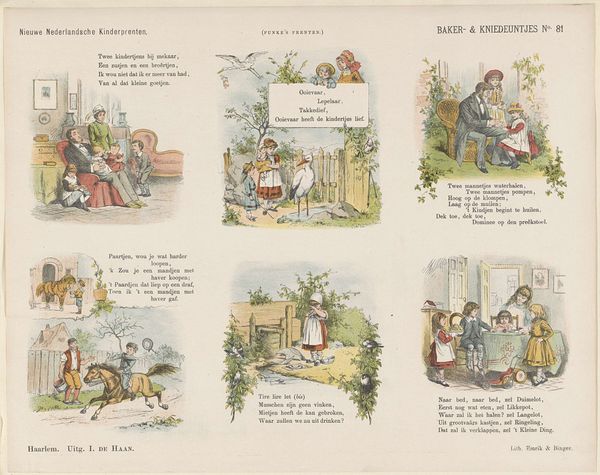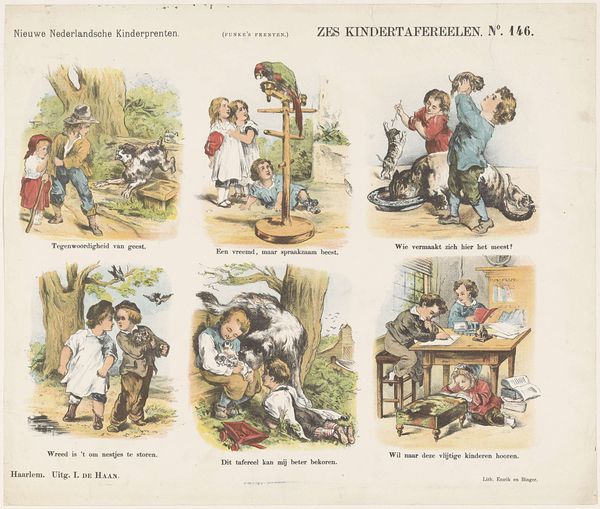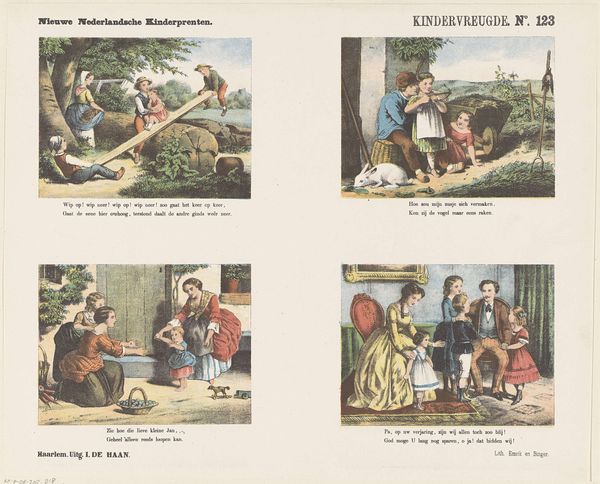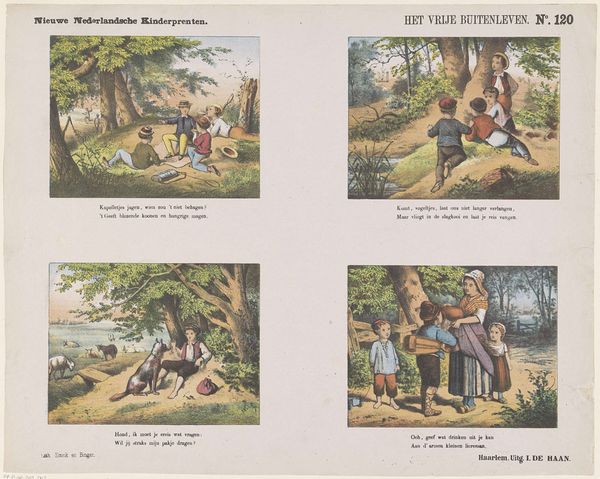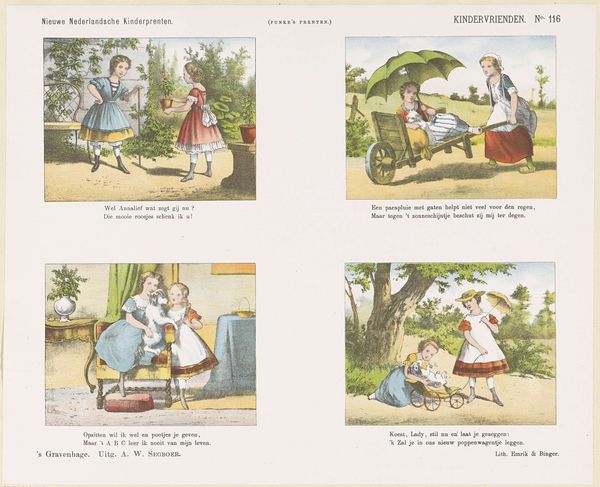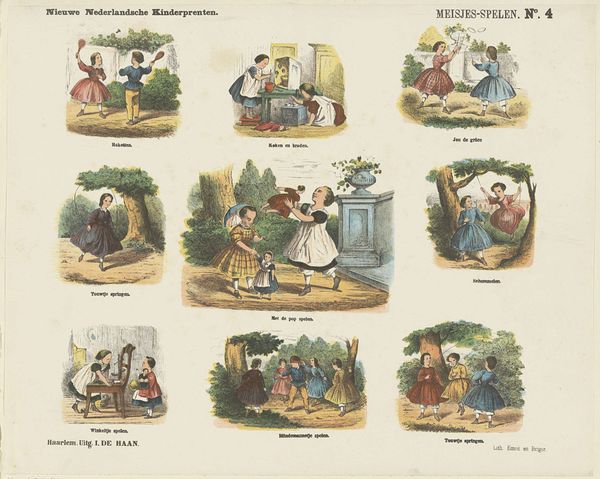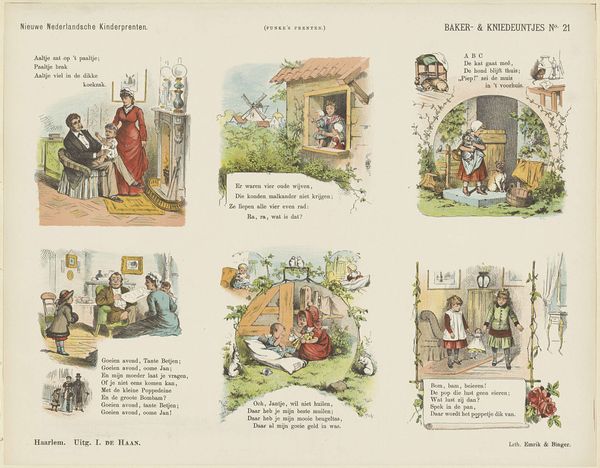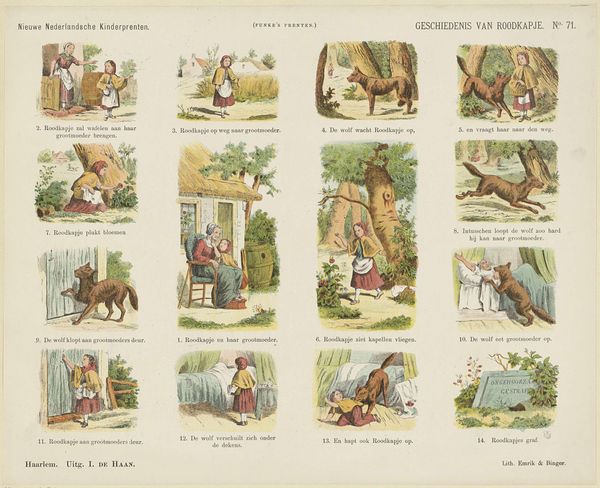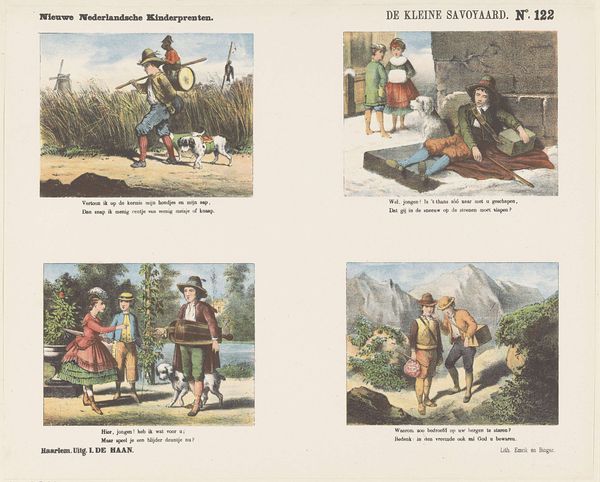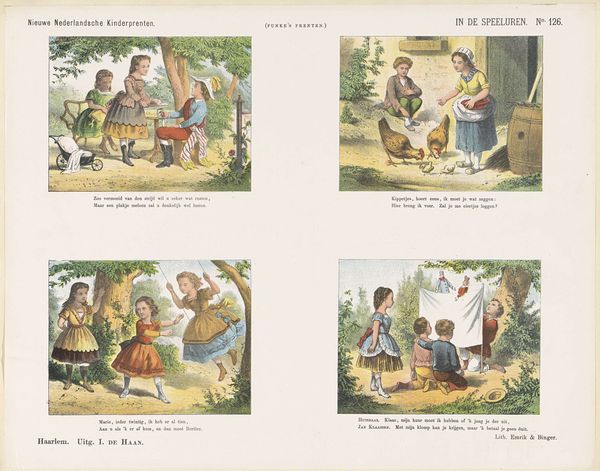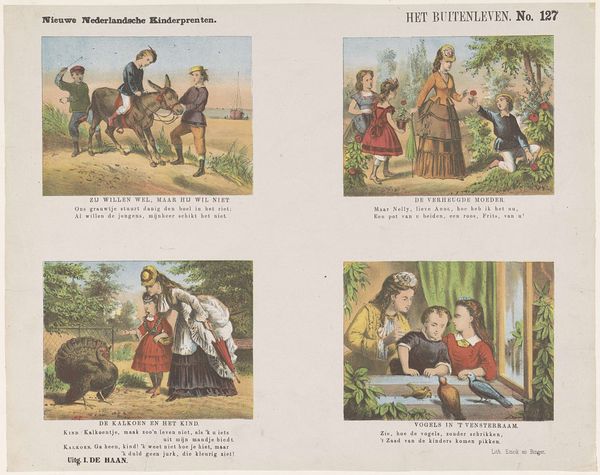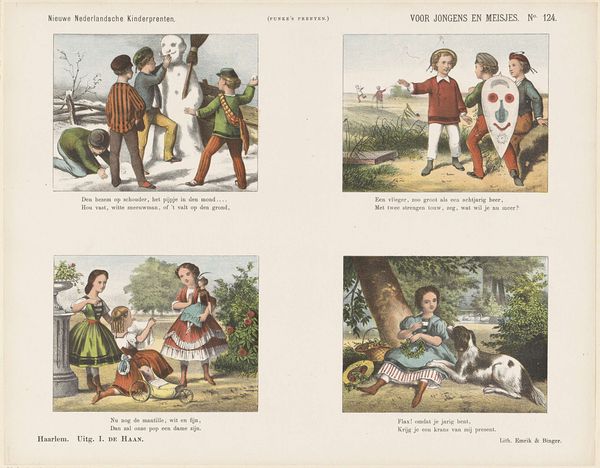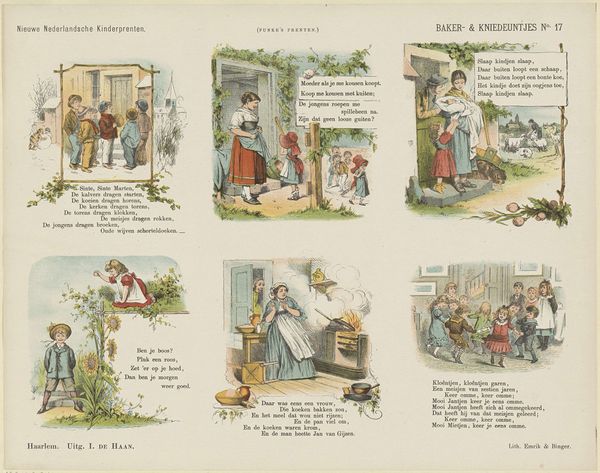
# print
#
watercolour illustration
#
genre-painting
#
realism
Dimensions: height 339 mm, width 429 mm
Copyright: Rijks Museum: Open Domain
Editor: This print, "Kinderpret" or "Children's Fun," by Jan de Haan, likely dates from somewhere between 1875 and 1903. It feels like a glimpse into a very specific time and place – almost like looking at snapshots of Dutch children playing in the countryside. What social context do you think shaped the creation and reception of images like these? Curator: That's a great starting point. Images like these, widely circulated as prints, played a significant role in shaping perceptions of childhood and national identity. Consider the late 19th century: increased industrialization, urbanization, and a growing sense of nationalism across Europe. Prints like "Kinderpret," by depicting idealized scenes of childhood innocence in a rural setting, served as a nostalgic counterpoint to the perceived ills of modern urban life. It presented an idea of a Dutch national identity rooted in an idealized, simpler past. Do you notice anything about the types of play depicted? Editor: Yes, they're all very self-directed – exploring, playing with animals, that sort of thing. Nothing feels explicitly educational or even supervised, besides perhaps in one scene. Curator: Precisely! The "genre painting" theme is key here. These images reflect a growing belief in the importance of "childhood" as a distinct stage of life, one needing protection and nurturing, a relatively modern idea then being cemented in place through visual and literary culture. The depiction of unscheduled, unsupervised play suggests that through that freedom the children are free to grow and mature and internalize these Dutch national values. In this context, "Kinderpret" isn't simply a collection of charming scenes but an active participant in a broader cultural project. These scenes of “Dutch” children served as tools to mold those viewing the artwork and encourage the internalization of Dutch values in order to become, one day, a citizen. Editor: That's fascinating; I hadn't thought about it that way! Seeing it as a way to help form those values changes the feel of the print entirely. Thanks for the insight. Curator: Of course! These prints are deceptively simple but incredibly rich sources for understanding the social and cultural landscape of their time.
Comments
No comments
Be the first to comment and join the conversation on the ultimate creative platform.
